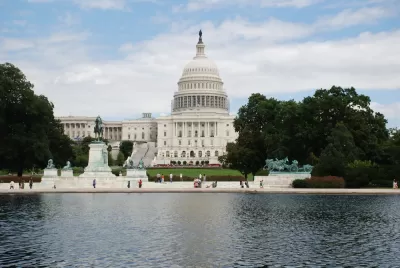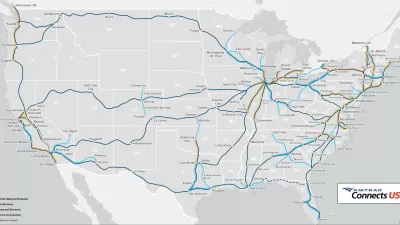The Build Back Better agenda is in retreat—including much of the substance on a plan to spend $330 billion to tackle the nation's housing affordability crisis.

Negotiations over the federal budget reconciliation bill, which includes several components of critical importance to the planning field, such as the Infrastructure Investment and Jobs Act, took a turn at the end of October.
Jersulem Demsas reports on how the budget bill has transformed the Biden administration's Build Back Better agenda—a key promise of the Biden campaign during the election and a frequent talking point in the White House as the Covid-19 pandemic has lingered. Demsas describes the evolution of the Build Back Better in dire terms:
This package was both a once-in-a-generation investment and also barely enough to scratch the surface. Now, even those proposed investments are being cut down as part of negotiations over the final package.
More concerning, according to the article, is the bill's avoidance of the root of the problem. To elaborate this point, Demsas interviews Paul Williams, a fellow at the Jain Family Institute, for details of the new, adjusted Build Back Better plan regarding issues like the Housing Trust Fund, down payment assistance, exclusionary zoning reform, and more.
A planning-specific component of Build Back Better, the "Housing Supply and Affordability Act," is still in the reconciliation bill, according to Tweets by the Planners' Advocacy Network of the American Planning Association. Williams, however, doubts the grant program is substantial enough to "swing the pendulum for a lot of jurisdictions, particularly those with some of the most egregious policies."
FULL STORY: Congress isn’t going to save the housing market

Alabama: Trump Terminates Settlements for Black Communities Harmed By Raw Sewage
Trump deemed the landmark civil rights agreement “illegal DEI and environmental justice policy.”

Study: Maui’s Plan to Convert Vacation Rentals to Long-Term Housing Could Cause Nearly $1 Billion Economic Loss
The plan would reduce visitor accommodation by 25% resulting in 1,900 jobs lost.

Why Should We Subsidize Public Transportation?
Many public transit agencies face financial stress due to rising costs, declining fare revenue, and declining subsidies. Transit advocates must provide a strong business case for increasing public transit funding.

Paris Bike Boom Leads to Steep Drop in Air Pollution
The French city’s air quality has improved dramatically in the past 20 years, coinciding with a growth in cycling.

Why Housing Costs More to Build in California Than in Texas
Hard costs like labor and materials combined with ‘soft’ costs such as permitting make building in the San Francisco Bay Area almost three times as costly as in Texas cities.

San Diego County Sees a Rise in Urban Coyotes
San Diego County experiences a rise in urban coyotes, as sightings become prevalent throughout its urban neighbourhoods and surrounding areas.
Urban Design for Planners 1: Software Tools
This six-course series explores essential urban design concepts using open source software and equips planners with the tools they need to participate fully in the urban design process.
Planning for Universal Design
Learn the tools for implementing Universal Design in planning regulations.
Smith Gee Studio
Alamo Area Metropolitan Planning Organization
City of Santa Clarita
Institute for Housing and Urban Development Studies (IHS)
City of Grandview
Harvard GSD Executive Education
Toledo-Lucas County Plan Commissions
Salt Lake City
NYU Wagner Graduate School of Public Service





























